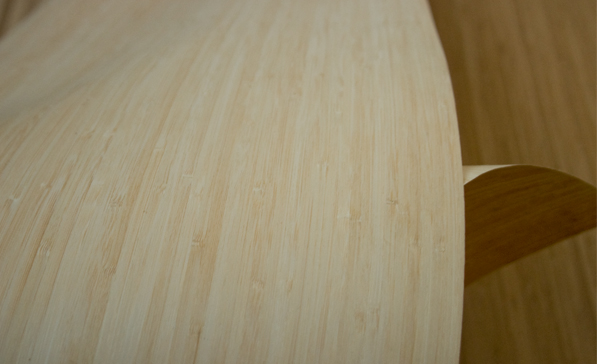What Makes Bamboo Veneers the Best of the Lot at Present?
There is no doubt that more and more homeowners or construction specialists are preferring bamboo over its contemporaries. But given the numerous species of bamboo and each having varying thickness, heights and uses, choosing the bets one for use is a matter of confusion. Planters know that bamboo’s great height, availability, hardness and thickness in diameter account for its advantages and naturally, the plant is now a ‘viable species’ for all those requiring it.
Among the different types, ‘Moso’ is considered the best. It’s growth is so quick (like 25mm per hour in a 24 hour period) and no less than 20% of the forest canopy is harvested, after about 5 years when it reaches maturity. Perhaps now it makes sense why bamboo veneers are the preferred options for most who wish to get the best value in terms of money spent, durability, safety and longevity.
What is bamboo veneer actually?
The demand for modern counter tops, tables, fittings, floorings and even buildings have pushed man to derive quality products. At the time of manufacturing bamboo, one can either obtain natural or even carbonized plywood. Bamboo usually has a tendency to change its color and that gets reflected when the material is heated.
How to get bamboo veneer?
The veneers are acquired much later. After all the plant needs to be cut, fibers taken out, processing technology implemented and series of other work. This includes milling of fiber, applying resin and overlaying. Not many are aware that veneering is an art and that dates back many years. It is when a very thin slice of material gets glued to some other form of material base like particle board, multiplex and MDF, after which floors, furniture, doors and panels are made.
In order to get the veneer, the thin and individual strips are laminated and then made into blocks using a waterproof adhesive. The block will get soaked for not more than two weeks and the slicing is finally made of 0.6mm veneer sheets. Then it’s backed using some other fabric.
Depending on the use and requirement of customers, the bamboo veneers are provided. While some may require a mere one or two sheets, while somebody else may order for several sheets of varying sizes or simply get it customized. The latter happens when pre-cut sizes, cross grain layups are made from the veneer itself. That however depends upon the store and the type of projects they undertake.
Why choose bamboo veneers only?
Not one, not two, but there are multiple reasons what makes bamboo veneer a must try:
Firstly, it is environment-friendly as it’s a renewable resource. The simple fact is bamboo is grass and not wood, which means it grows up to a foot and half per day. The growth rate is so immense that the production keeps increasing by the day and practically everyone is now fond of it.
Secondly, bamboo falls in the category of the middle road price (if not the lowest priced veneer in the market) and yet offers such tremendous quality, top rated style and definitely, an eco-friendly option. All these make the material true value for money and a favored one for its cost-effectiveness.
Thirdly, bamboo is better known for being an Asian species, even though it can survive in any non-polar region of the world. So it stands exotic for a large section of the population based in Western countries. So people staying there look at it with an allure that probably customers closer home wouldn’t or rather prefer for some other reason and not exactly this.
Fourthly, bamboo is found in its natural shade and that is yellow or blonde. The carbonized one is somewhat of a tan or buckskin variety. These variations are often very appealing before buyers and that’s exactly why, almost all the species sell like hot cake!
Lastly, the grain patterns look interesting. On the one hand, vertical is somewhat thin and tight of about ¼” grain, the planked ones are thicker of the same measurement but looks a tad different. It’s amazing but both grains can be found in both shades and that makes a total of four varieties.



 皖公网安备 34180202000049号
皖公网安备 34180202000049号